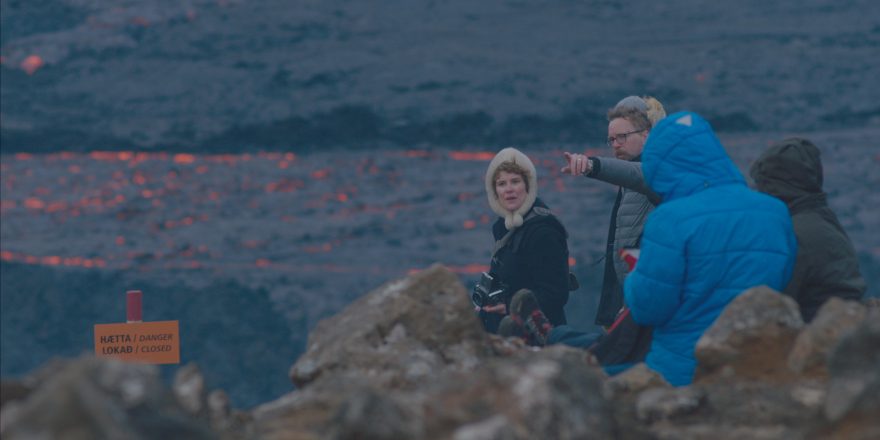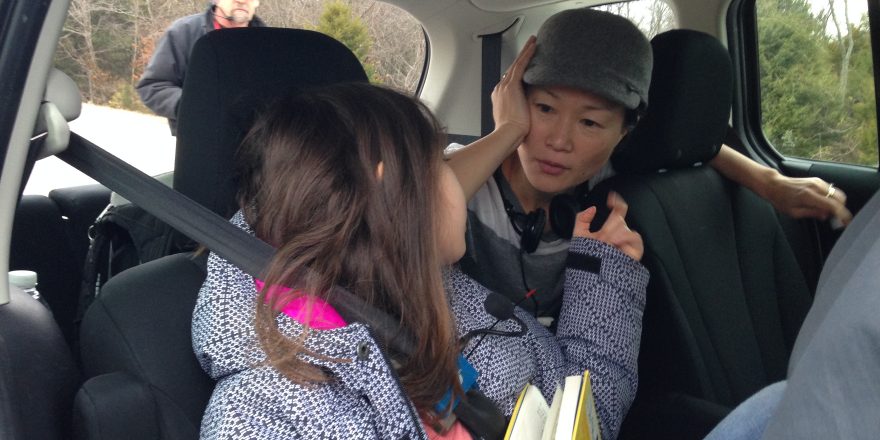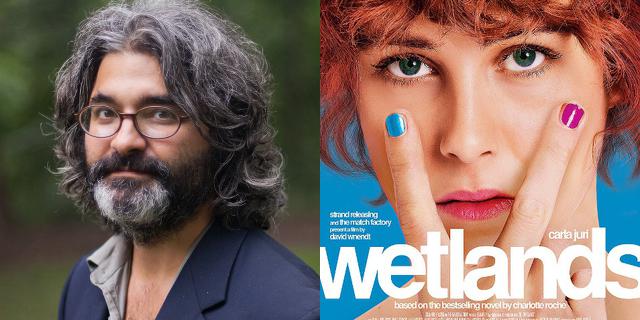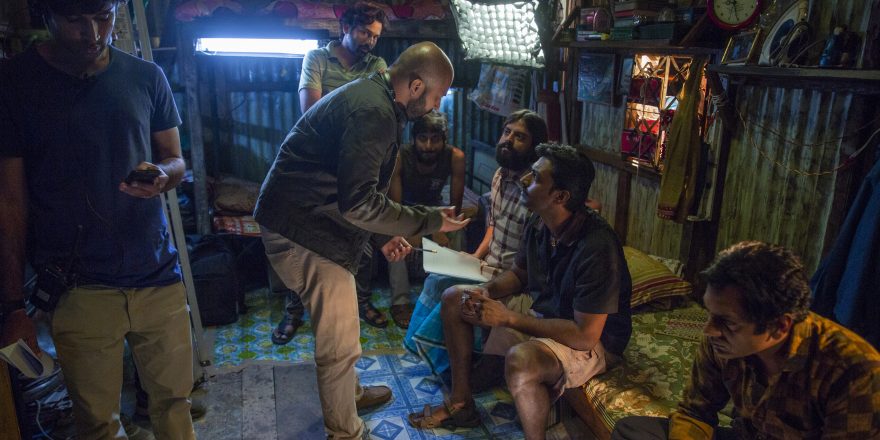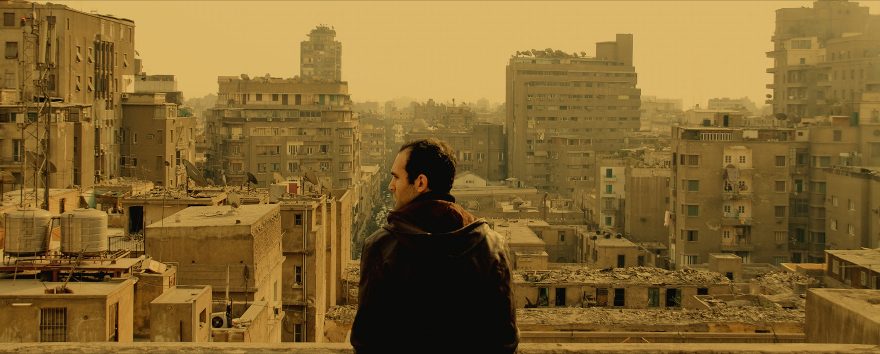1. I’m building a dresser for my daughter. My approach to furniture is much different than filmmaking. When building a dresser or desk or what have you, I want everything to be very precise. I plan ahead, making drawings, being sure about the construction and measurements. I found a plywood distributor who will cut all the wood down to 1/16”. This makes all the difference, then all I need to do is assemble the pieces.
2. In contrast, when making a film, I long for accidents and surprises. Anything that is unplanned is an opportunity for life to enter the film. My approach to life in general should be like this, but I’m too stressed and impatient, for some reason.
3. If I use European finished plywood, the edges are beautiful, it’s finished, comes in colors, too. But my daughter doesn’t like the exposed edges. So I chose birch unfinished plywood, which is actually five times cheaper. This is good. The not-so-great thing about it is that it’s not actually 3/4”. It’s metric. So it comes out to 11/16” approximately and makes for mind-scrambling math.
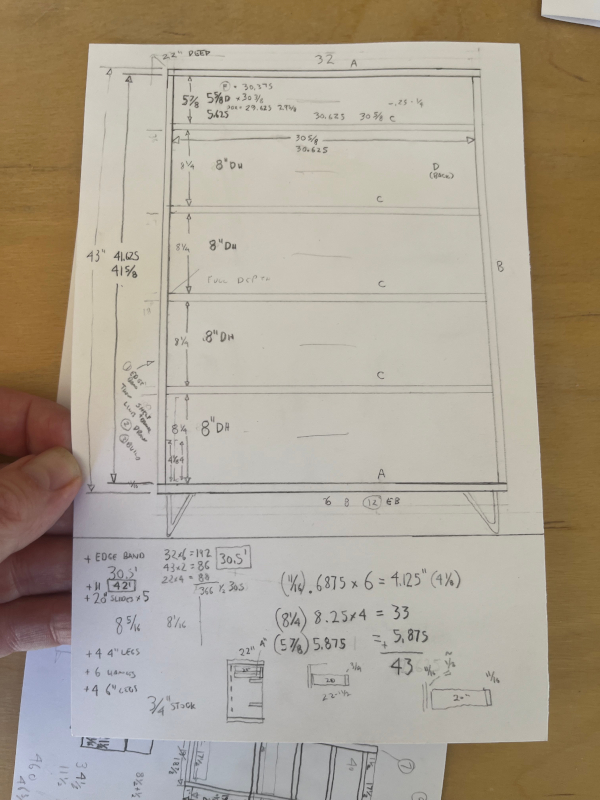
4. One of the things I did in Japan when I was shooting I’ll Be Your Mirror was to meditate twice a day. This is something I should do every day, but ironically I tell myself I don’t have time. Every morning, I would get up an hour early and start by meditating for 20 minutes. At lunch every day, Carla Juri (the lead actress) and I would meditate for 20 minutes before eating. This helps focus, and patience. It opens your mind to receive things in a more productive way.
We had to shoot some of the most emotional scenes in the film on the third day, because of the availability of the location. I was very nervous about shooting these so soon, but Carla was very relaxed about it, which helped me. I scheduled enough time so we could have all day, but we finished in just a couple hours. With half a day of shooting left, Eric Lin, the D.P., and I rode bikes down the street and looked for new locations to shoot.
I schedule shooting time by scenes, instead of page count. On previous films, I’ve had to schedule seven scenes a day, which I feel is too rushed. On this day, because Carla was supposed to be crying all morning, I scheduled four scenes. We ended up shooting nine additional scenes, one scripted and eight found. Three of these ended up in the final film.
I approach narrative like a documentary. I like filming more than is planned, because it allows for spontaneous moments to happen. We can also listen to the world this way, and see what our surroundings bring to the story.
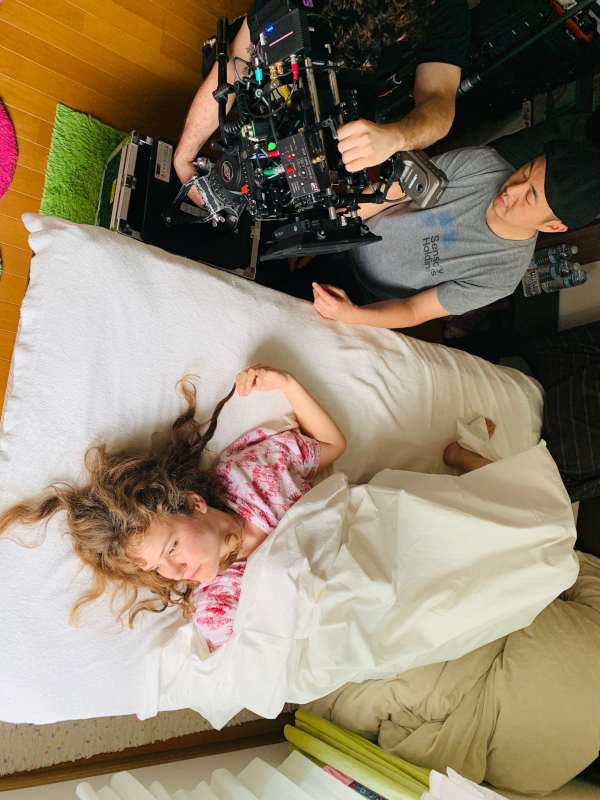
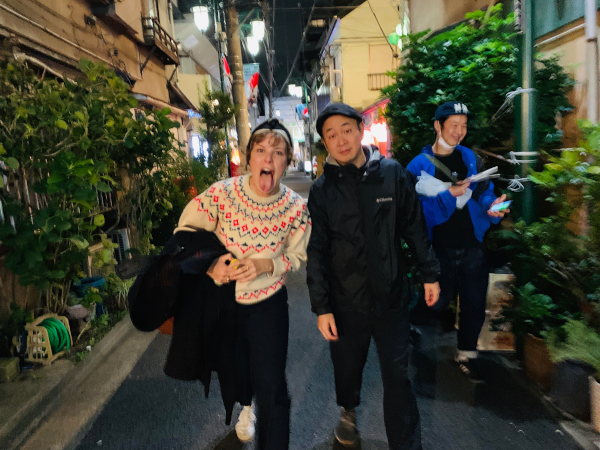
5. Probably the reason I like building something is because there is a list of things one needs to do in order. You make measurements, order the wood, prepare it, drill pocket holes, etc. Once the design has been done, there is very little creative thinking, it’s a task. It’s a task. A process. So if I have an hour, I can get an hour of work done. While if you’re writing, an hour mainly involves sitting and thinking. It doesn’t feel like you just got an hour of work done. It’s hard to measure one’s productivity. I once heard someone ask Ray Bradbury what should you do if you get writer’s block? He asked, “What’s that?” They said, “You know, when you’re writing and then you stop?” He said, “If you’re writing and you stop, you’re doing something wrong.” At first, I thought this sounded a bit harsh. But later I realized he meant that stopping is a good productive signal. It means listen to yourself and fix the problem.
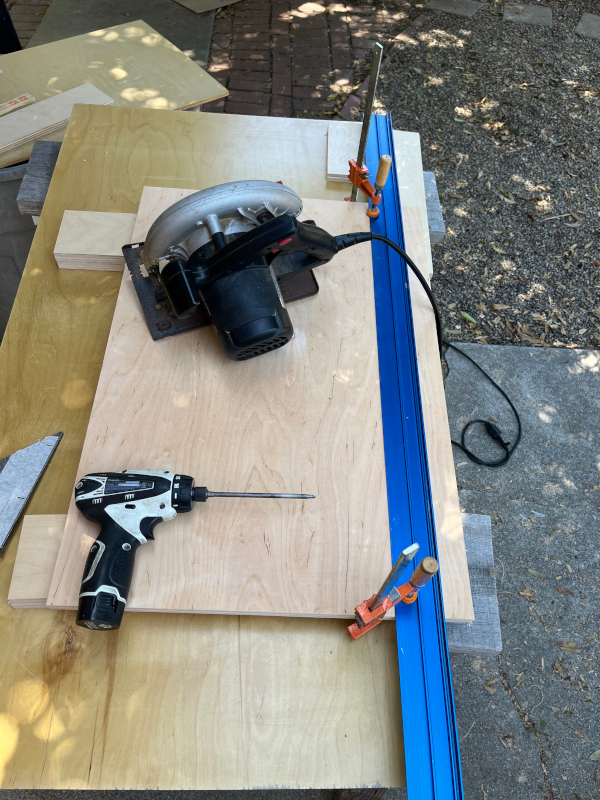
6. Utilizing mishaps and surprises usefully while on set is dependent on three things: Your cast, the crew, and time. Casting is important. If you have cast appropriately for these moments, your actors will always bring something authentic to any situation. I was looking for a little girl for the film, and we started with auditioning child actors. They all wanted to please us, to do what was asked of them, and to perform. I wanted the child to be like a child in real life: unpredictable, stubborn and curious. While we were preparing for the film, I was also working with the Downs Syndrome Society in Tokyo to gather a group of kids who would dance in the film. One of the fathers in the group had a nine-year-old daughter, Futaba, and I asked to meet her. We met at a train station, she looked at me, seemed unimpressed, and walked off. “This kid is perfect,” I thought. Once in the middle of a scene, Fu-chan (“chan” is a Japanese term of endearment) stood up on the middle of the couch and started singing a song about mountains fighting each other as sumo wrestlers. I couldn’t have written that, so it was a wonderful gift.
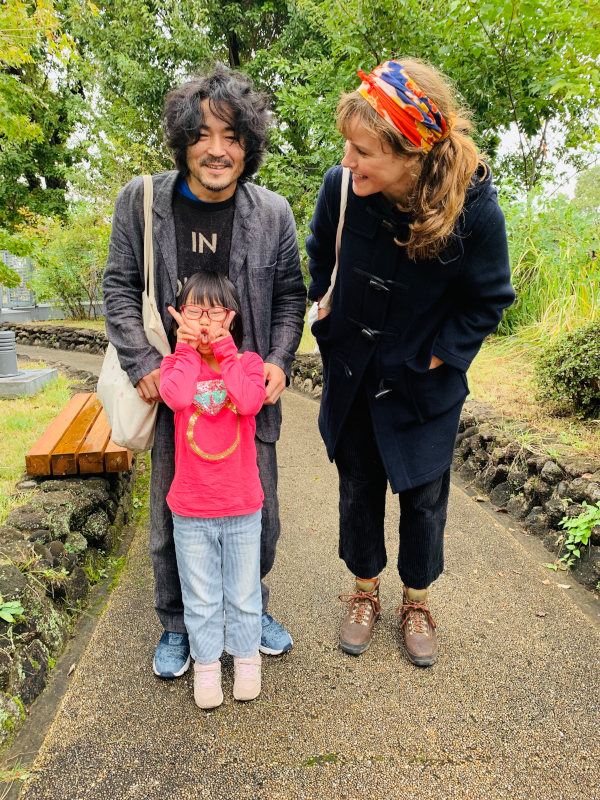
7. Because my daughter didn’t want to see the edges of the plywood, this meant I had to try “edge banding.” I hadn’t edge banded before. So it was a first, and I learned something I can pass on. It involves taking some very thin ribbons of wood and ironing them to the edges, which heats up some glue on the underside. Afterward, you trim it to fit.
My daughter and I tried this, but the glue kept coming off, so we kept ironing and ironing. It seemed more difficult than expected. Then I figured out what we were doing wrong. You just iron the wood once, the glue heats, then you rub it flat with another piece of wood. What we were doing was heating and reheating the glue, which is why it never set.
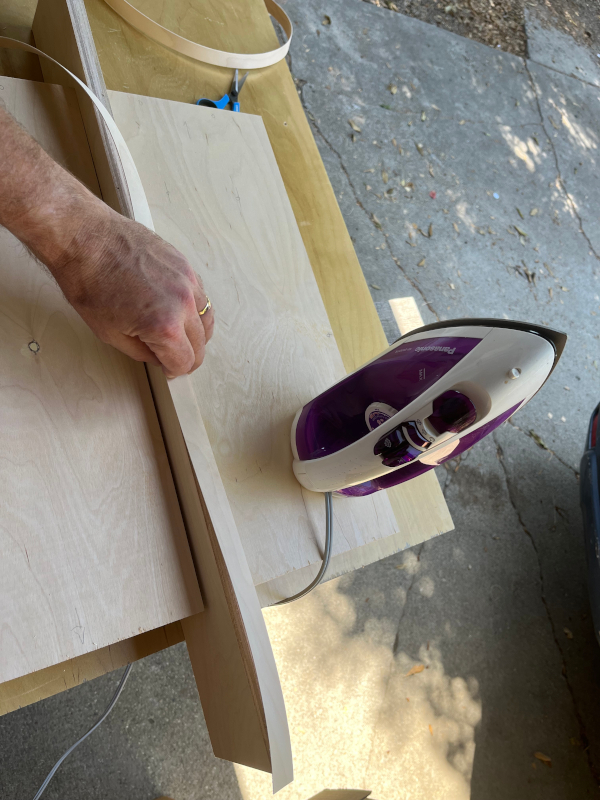
8. Before I left for Japan to shoot, I asked my wife, So Yong Kim, to look at the script one last time. It would be the first time we were making a film without both of us on set. She had a look at it and said, “It needs more joy.” “More joy?” I thought. “What does that mean?” So’s almost always right, so I let it sit with me. “Joy” as an ingredient.
When I first met Futaba, her parents had their hands full with their other kids so they asked me to push her on a swing. Futaba loves swings. “Ah, that’s joy,” I thought, we will have a scene where Carla and Ueno push her on a swing. The scene will then also show the audience that she’s a close friend to him and his daughter.
We set up this shot in a park near where we were filming. Carla and Ueno started pushing Futaba on a swing and as soon as we started shooting, she got up and ran off. We place the camera for scenes like this very far away for two reasons: one, in case something happens, we have a large breadth of view we can pan with, and secondly, so everyone else in the park won’t know we are filming. In this way, you get a lot of real things happening. After the take, we have assistants run and get permission from the background people to be in the film. I learned this technique from the producer Scott Macaulay, who used it for Julien Donkey-Boy.
After running away from the swings, Fu-chan started hiding candy around the park which Carla had given her and then had Carla and Ueno close their eyes and find it. Again, this was better than what I planned.
Fu-chan also likes to pick up a cell phone and make videos of herself on it. We used this idea for another scene in the park and it ended up being the final scene of the movie.
9. I measured the holes for the handles to go on the dresser by picking the middle of the drawer. This seemed sort of obvious, but after attaching the first one I realized the handle holes are at the top part of the hardware, so when you look at them, they’re not really sitting in the middle of the drawer. Oops. Fortunately, this was for the top drawer, so I could adjust it for the other drawers on the dresser.
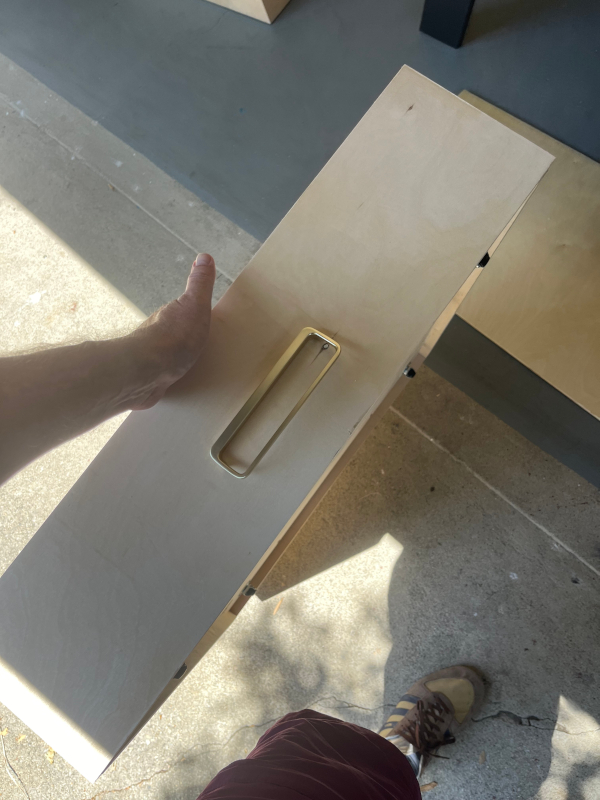
10. Here’s a dilemma you might run into while in Japan. Is this a urinal or a sink?
(It’s a sink.)
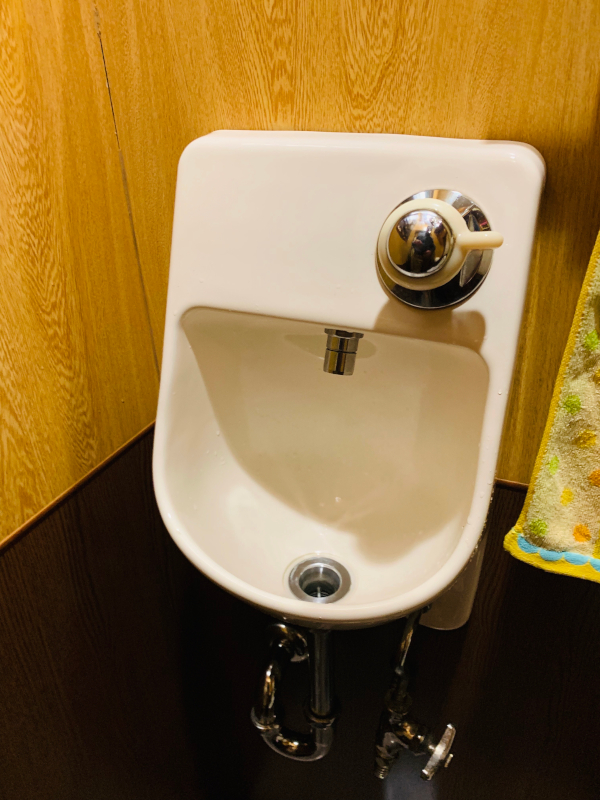
11. Many friends helped me make I’ll Be Your Mirror feel more local and authentic by introducing me to places they frequented and interesting people they knew. One restaurant served “wasabi rice,” which was invented by the colorful chef. This is painful to eat, but joyous to watch. So it became another “joy” scene. I tested the idea on Eric Lin, our D.P., and my “number one” assistant, Michi Oyama.
Our “number one” is basically the Assistant Director, but with more roles. Michi kept track of all of my notes, my shooting schedule, the costumes, the costume changes. She was also my translator and only she and Eric knew that the entire film was perhaps a momentary dream Carla’s character was having. A recollection of her time in Japan, in fragments.
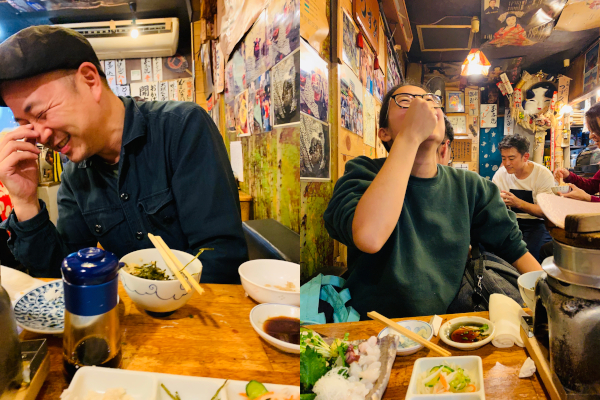
12. The impetus to shoot the film in Japan was because when So and I lived in Tokyo in 2000, we met a choreographer named Chieko Ito. She used dancers and non-dancers in her performances, so some of them were perfectly in sync, and some were well-intentioned but clunky. It makes her work both fun and beautiful. Full of life. In a similar way, So and I like working with actors and non-actors together. I asked Chieko if she’d like to make something together someday. We agreed to put our ideas in a “box” until one day we’d open the boxes and find something. I called her when I had an idea for the film and we opened our boxes together. Chieko is the one with the glasses.
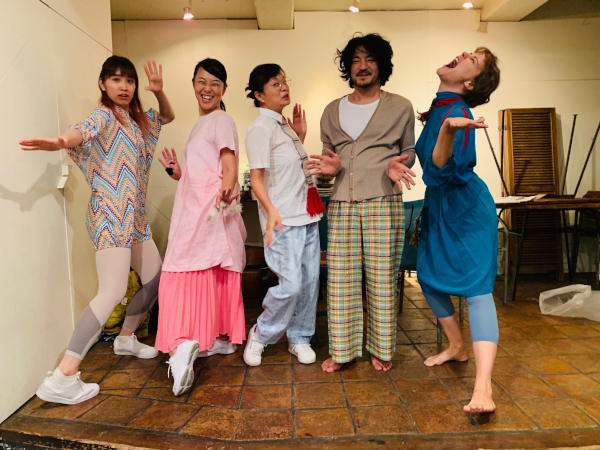
13. This is The Godfather. I met him through Ueno. We filmed in two of his restaurants, on the roof of another, we met several other store owners through him, and he threw a street party for us to use as another scene. He’s surrounded by lovely talented people. Making a film gives you an excuse to find wonderful gems like him.
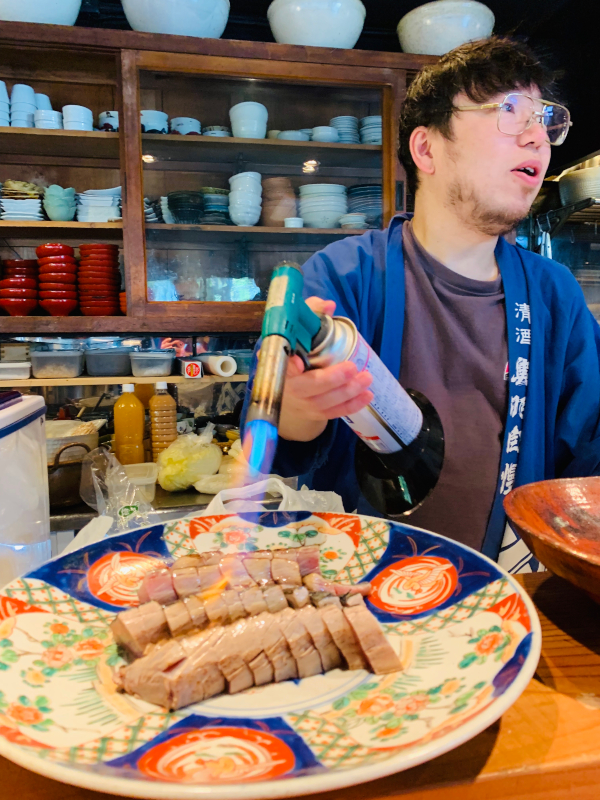
The Godfather is always on the move.
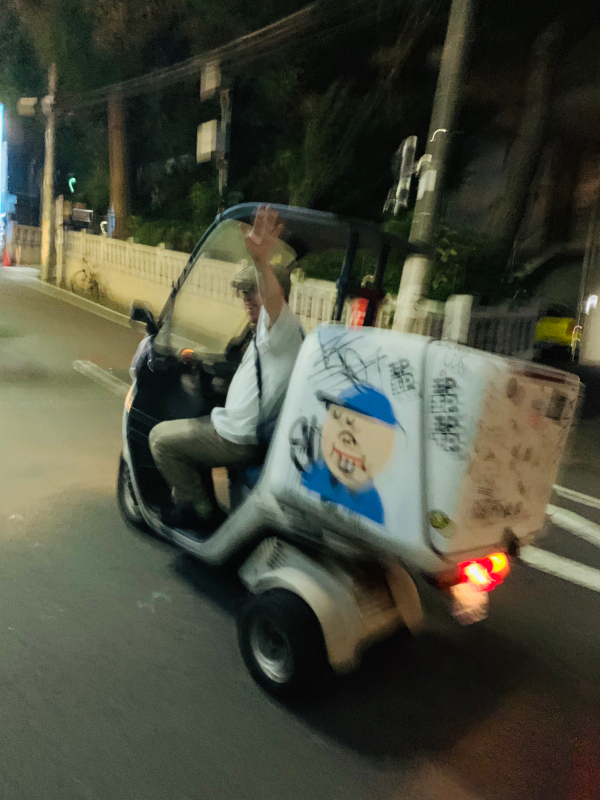
14. A pocket-hole jig is useful when working with plywood. It allows you to screw pieces together from the inside, so the attachment doesn’t show on the outside.
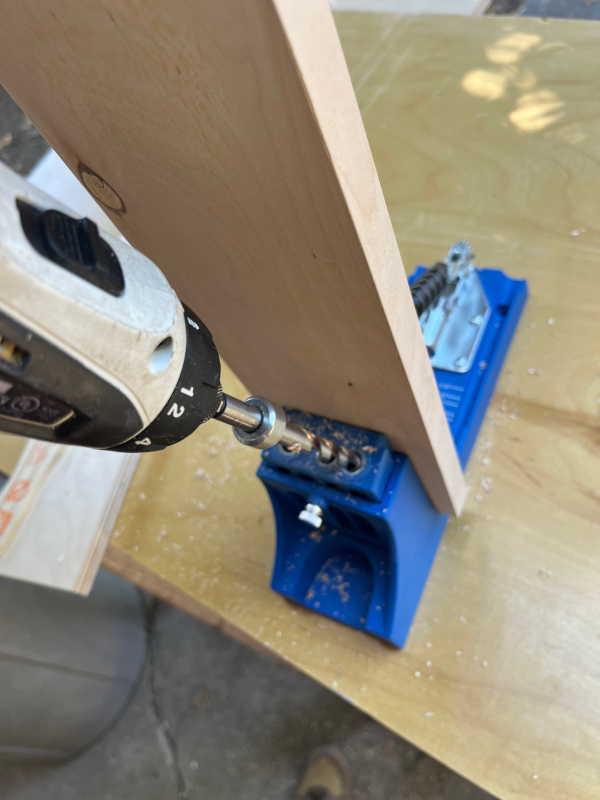
15. I like to do a lot of long takes when filming digitally. This allows for something spontaneous or unexpected to happen in a shot. Rin, our sound guy, fell asleep in the middle of this take. But the sound was rolling, so it was all good.
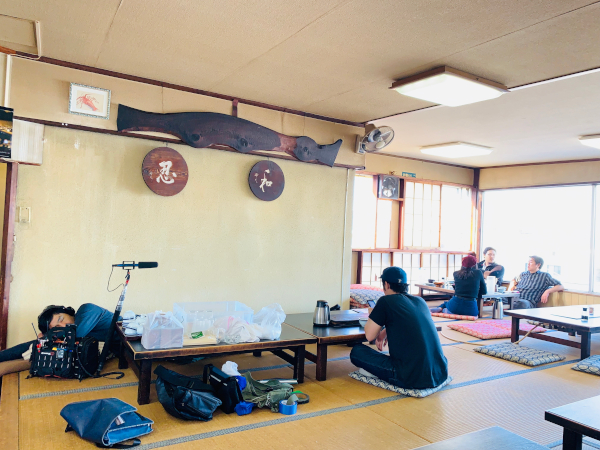
16. I asked Kiyoshi, the line producer, if he could help me find some place that was loud. Most of the film is really quiet. I was thinking of the old Tokyo Fish Market, which was filled with the cacophony of fish sellers calling out prices.
A few days later, Kiyoshi said to me, “I found your boat.”
“Boat? What do we need a boat for?”
“Boats are loud, they have loud engines.”
So I wrote a scene to happen on a boat. When you get a boat, use it.
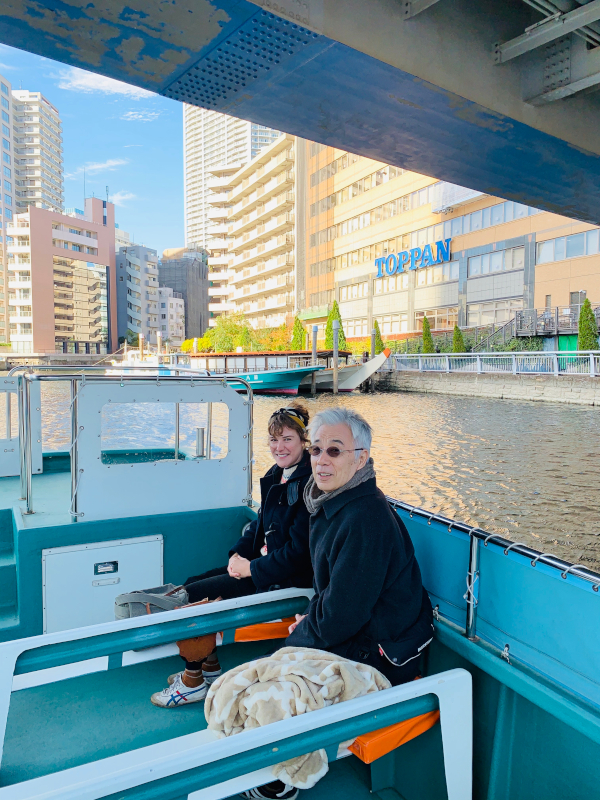
17. Kiyoshi was tired and sweaty most of the time, because he worked very hard. His most daunting task was to find a grandmother for the film. He drove around the outskirts of Tokyo, looking for a grandmother. Michi and I also followed old ladies on the subway, and that didn’t work either.
At the start of the shoot, Ueno mentioned he was going to record an album in the countryside for three days, right in the middle of our schedule. This was unfortunate. Typically, this would upset me. Then I thought on it and asked if we could film him in the countryside, as if Chloe, came on the trip with him. He agreed, so we did this.
The location was beautiful, tranquil, in the woods, and after filming the band set up, we had extra time to drive around and find new things. We decided to look for people Carla’s character might interview in the film. So we drove into town. But we all fell asleep, except for the driver. When I woke up, we had passed the town and we were in the middle of some rice paddies. We agreed to stop and ask the first person we saw to be in the movie. An old woman was by the side of the road, tending her flowers.
We stopped and spoke to her and she agreed to do a scene with us.
A couple weeks later, Kiyoshi was sweating hard over seeking a grandmother to no avail. He asked if we could use the grandmother from the countryside we found.
“She’s wonderful, but isn’t she too far away?”
“We’ll make it happen.”
That’s a line producer for you.
She became the soul of the film and we wouldn’t have found her if none of these obstacles had got in our way.
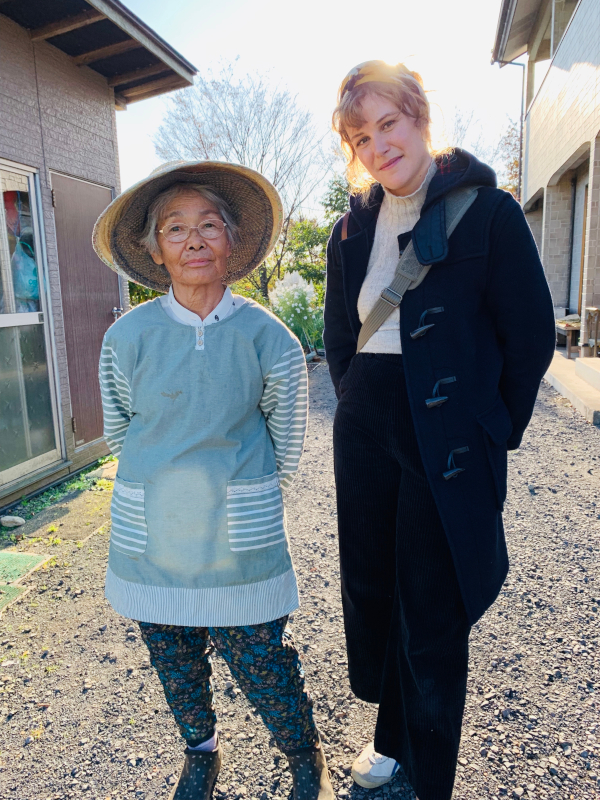
18. Most of the people in the film are non-actors. But I deeply wanted Issey Ogata to play Chloe’s translator in the film. When we met, he said his English wasn’t good enough to play the part as I wrote it. Then he added that many old people in Japan like to help tourists, but they’re not very good at communicating. We agreed this was a great approach. He learned all of his lines phonetically, so when we shot his scenes, he mostly stayed on script.
There is a moment in the film where he explains that his wife is battling cancer. When So watched me cutting this scene she said, “Oh, wow, does Issey’s wife really have cancer?”
I looked at her; that scene had been in the script for years.
“No,” I said, “he’s just that good of an actor.”
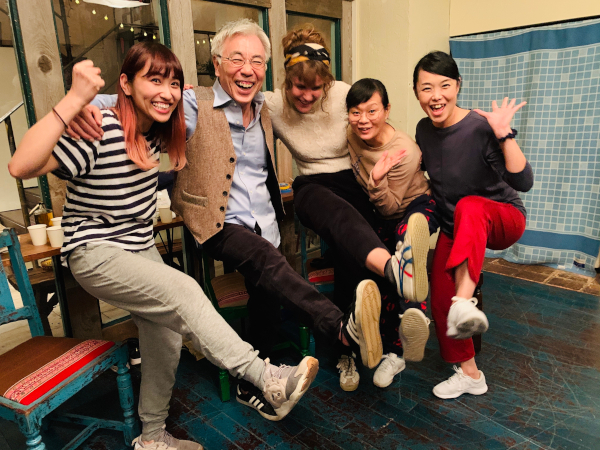
19. My Uncle Dave taught me this trick. Tie your extension cord to the power cord of your tools. This way if you pull on it, the cord won’t pop out mid-cut.
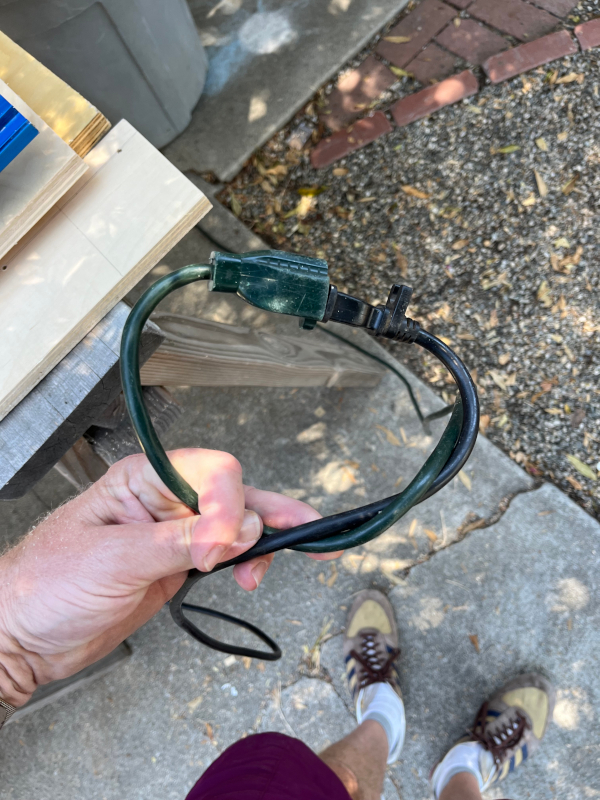
20. We shot additional sequences for the film in Iceland. When I arrived, my line producer, Sólmundur Björnsson, insisted we went to see a volcano that was erupting so we could shoot it for the movie. I explained that I didn’t have a volcano scene planned. But he was very persistent. This would mean we needed to carry the equipment more than a mile up a mountain for the shot. But when the crew heard about the location, everyone agreed to the hike. I learned that if someone gives you a volcano, you use it.
After we filmed a first take, we decided we wanted to get closer to do another try. Now Sóli started sweating, because we needed two hours to get back and we didn’t want the crew to work overtime. Fortunately our investor, Elika Portnoy, was standing next to me. “Let’s go for it,” she said.
The volcano erupts roughly every seven minutes. So by the time we got right next to it, we only had time for one take. The shot had to match our style, so it meant the camera needed to pan very slowly and find its way into the final frame. I asked Carla and the other actor in the scene, Gustaf Skarsgård, to start walking a certain direction as soon as the lava started erupting. But they walked faster than our pan. We shouted for them to stop and they did just in time. It was a close one, but it worked.
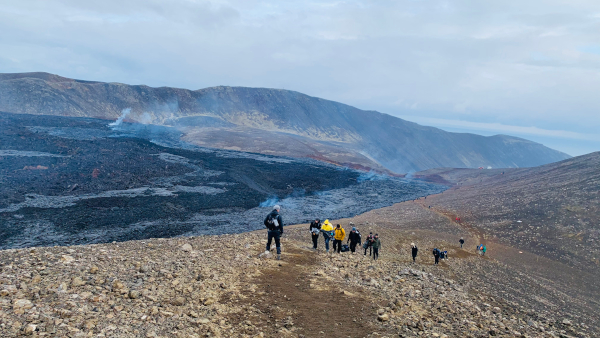
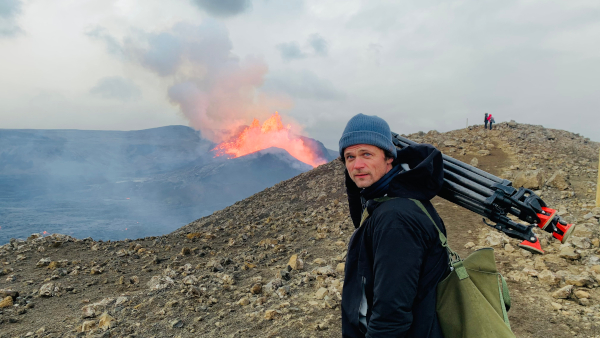
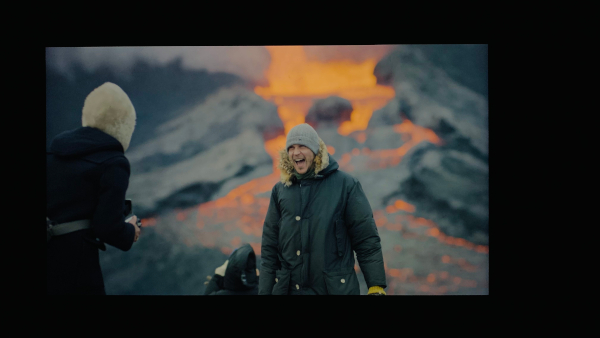
21. I attached the wrong side out on one of the drawers. It will haunt me. It stares at me with all of its flaws. (It’s the third one down.) My daughter said it will remind me of my imperfections. It doesn’t bother her, but I’m sure she will tease me about it for a long time to come.
Inevitably, we are destined to make mistakes.
Finding the beauty in the unexpected is something I’ve learned from filmmaking, but I don’t always remember in life. Perhaps that’s my greatest imperfection. It gives me something to strive for.
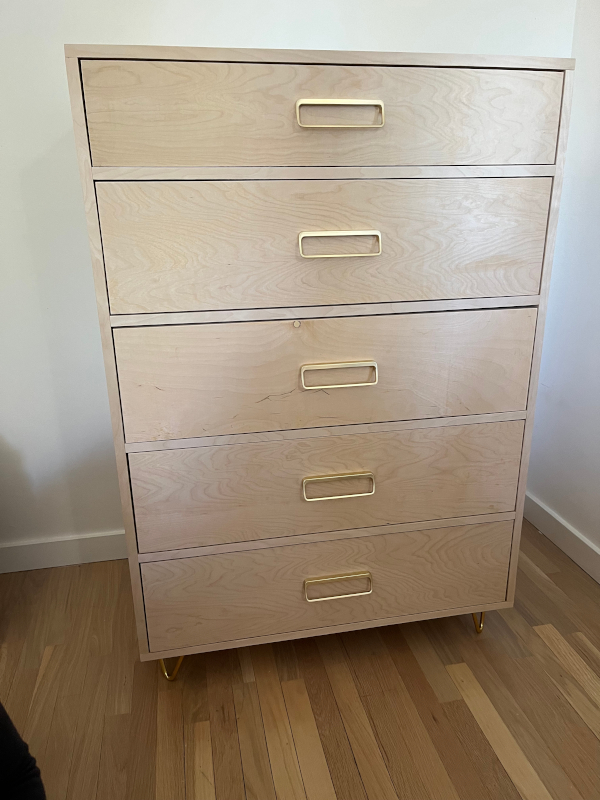
Featured image shows Bradley Rust Gray with Carla Juri at Fagradalsfjall; all images courtesy Bradley Rust Gray. 


